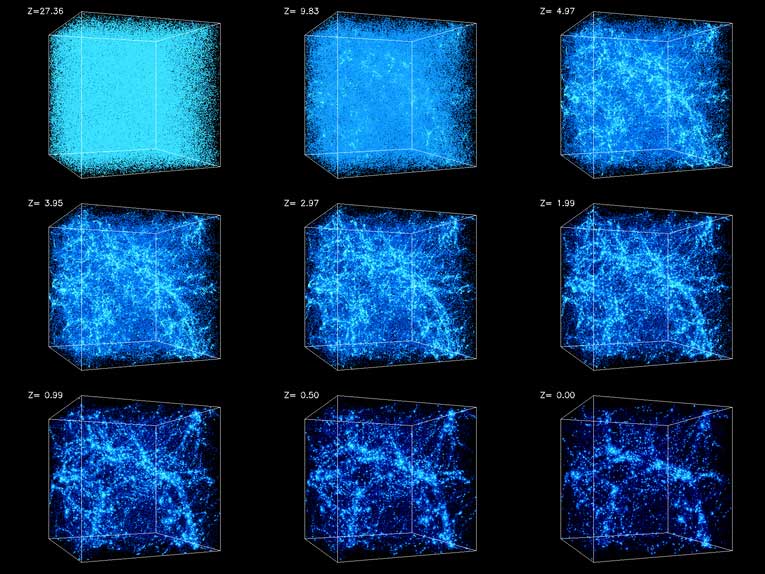
The frames illustrate the results of computer simulation of the formation of clusters and large-scale filaments in the Cold Dark Matter model with dark energy. Each frame portrays the evolution of structures in a 43 million parsecs (or 140 million light years) box, from redshift of 30 to the present epoch (upper left z=30 to lower right z=0).
At the initial epoch (z=30), when the age of the Universe was less than 1% of its current age, distribution of matter appears to be uniform. This is because the seed fluctuations are still fairly small. As time goes on, the fluctuations grow resulting in a wealth of structures from the smallest bright clumps which have sizes and masses similar to those of galaxies to the large filaments. Notice the filament spanning the entire box from left to right and how it becomes more and more pronounced with time. Also, note that it does not change much between z=0.5 and z=0 (i.e., the last two panels). This is because the expansion of the universe is in the stage of acceleration as the "dark energy" becomes dominant at z<1. On large scales seen here, gravity cannot compete with the dark energy-driven acceleration and the growth of structures ceases. As the contraction of large-scale structures is halted they expand with the universe and appear "frozen" in our co-moving system of coordinates.